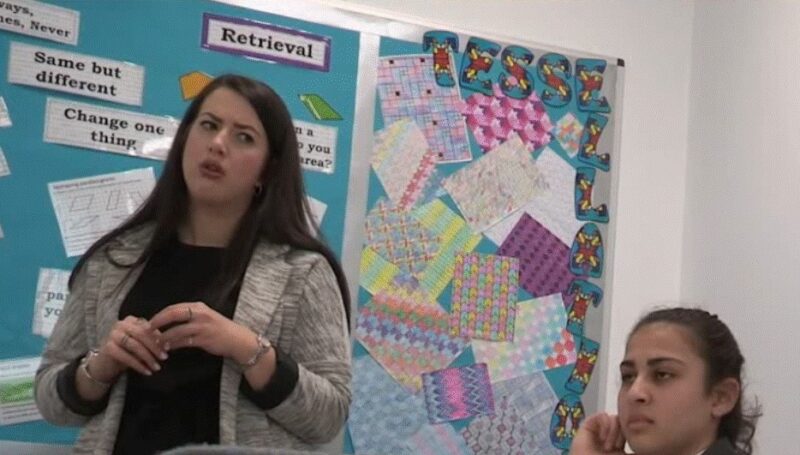“Convince us”
RME classroom culture focuses on explanation.

Building on “Can you say what he/she said?”, students move to a discussion of strategies and how they work, consolidating their learning. “Convince us” emphasises the need to persuade others in the room that a strategy or argument works, and establish a shared reasoning. The teacher’s role is to facilitate the discussion, and remain neutral. Without the teacher as the final arbiter of right and wrong, students need to take responsibility for the final decision. “Convince us” emphasises that everyone, not just the teacher, needs to be persuaded.
Explaining our thinking isn’t always easy. Although students may sometimes struggle to verbalise their thoughts, demonstrating their ideas with gesture or drawing can be just as good. This might also lead to strategies that students carry on using in other settings and problems. In the long run, attempts to articulate — in any form — contribute to a deeper understanding of concepts and connections.
Here are a few ideas to support your classroom’s explanatory powers:
- Ask students to come to the board to show their solutions or explain what they mean. (Sometimes this is easier if other students are there for moral support.)
- Encourage students at the board to communicate with other students, not the teacher.
- Slow down complicated explanations with your own confusion — wrinkle your brow and ask other students to help explain what’s going on. Can they “say what he/she just said?”
Finding the area of a slanted triangle
We can see how hard it is to explain a strategy in this exercise of finding the area of a slanted triangle. First, Hannah explains how she uses a surrounding rectangle to work it out:
Here Katie explains a very different strategy:
In these examples, we see how the students use gesture and drawing to supplement their explanations. But how can Katie guarantee that her method makes sense?
